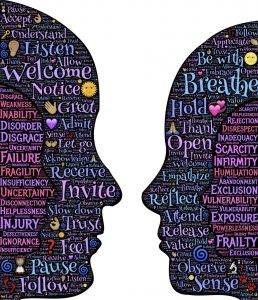
Public Domain Picture by John Hain
This video clip https://www.youtube.com/watch?v=Y2RP4V30h60, introduces Hannah Morikawa who talks about how being a non-Indigenous ally can change the world. What is ally-ship? Being a non-Indigenous ally takes a lifelong process of learning and building of relationships in order to amplify value and support to those voices that are wanting to be heard. Having the privilege to NOT speak for the Indigenous peoples, rather to use your privileged platforms and opportunities that many do not have so that we can all responsibly help implement systemic changes that includes and reflects Indigenous ways and knowledge. So we can all help begin to reverse the systemic and individual racial issues, stereotypes, discrimination, colonialism and the inter-generational traumas that the underrepresented Indigenous peoples have been subjected to for generations and will be subjected to for generations to come, if things do not change for the betterment of the people.
We can continue the healing process once we as a whole country and world begin to recognize that Canada was and still is a settler colonial country. Killings, rapes, kidnappings and enslavement of the Indigenous peoples-happened, how settlers manipulated nations to sign treaties to take their land-happened, to the controlling of resources/trades and profiting from it aka stealing-happened, the breaking up/separation of countless families happened,and the creation of reservation schools by government and church-happened, stereotypes and discrimination produced by mass media about the Indigenous culture-happened, how they were seen by most of the non-Indigenous public as ¨problematic/unacceptable¨-happened, and subjecting children to the worst forms of abuse, unfortunately also happened. (In regards to the very recent devastating news about the Kelowna reservation school, and what happened there…my eyes well up and my heart continues to break as I write this blog, for all the children and lives lost due to hate and/or ignorance.)
This resulted in the eradication of the Indigenous peoples, and the repercussions of these events leads us into the state we live in today. Where natural resource companies have more rights than the Indigenous peoples, where thousands of Indigenous girls and women are murdered/missing and no one was/is helping, where the majority of Indigenous communities have still have no access to food nor clean water, where half the children in foster care are of Indigenous descent-my list can go on. My question to you is, do you feel this country and its government are currently working for or against the Indigenous peoples? And can ally-ship help begin to rectify the wrong?
Reference:
TEDx Talks. (2018, May 28).Being a Non-Indigenous Ally -Keynote Speaker, Hannah Morikawa. TEDxCarletonUniversity. [Video].YouTube. Retrieved May 24, 2021, from https://www.youtube.com/watch?v=Y2RP4V30h60

